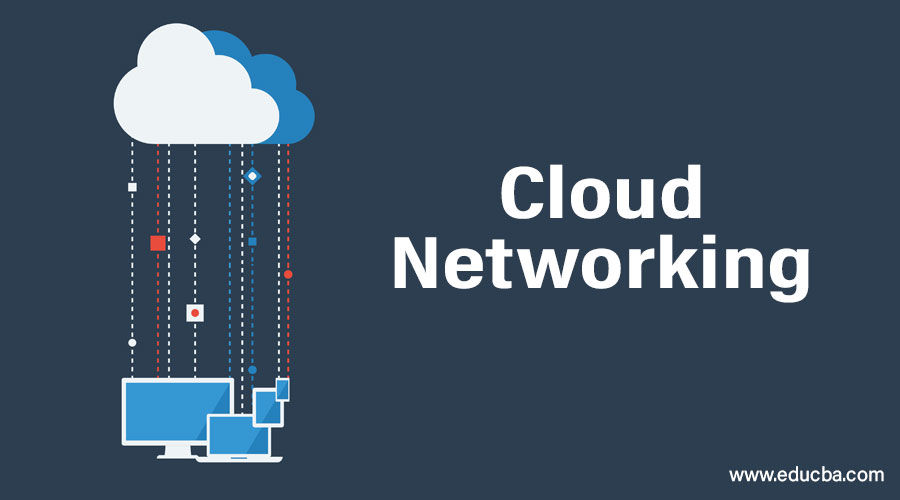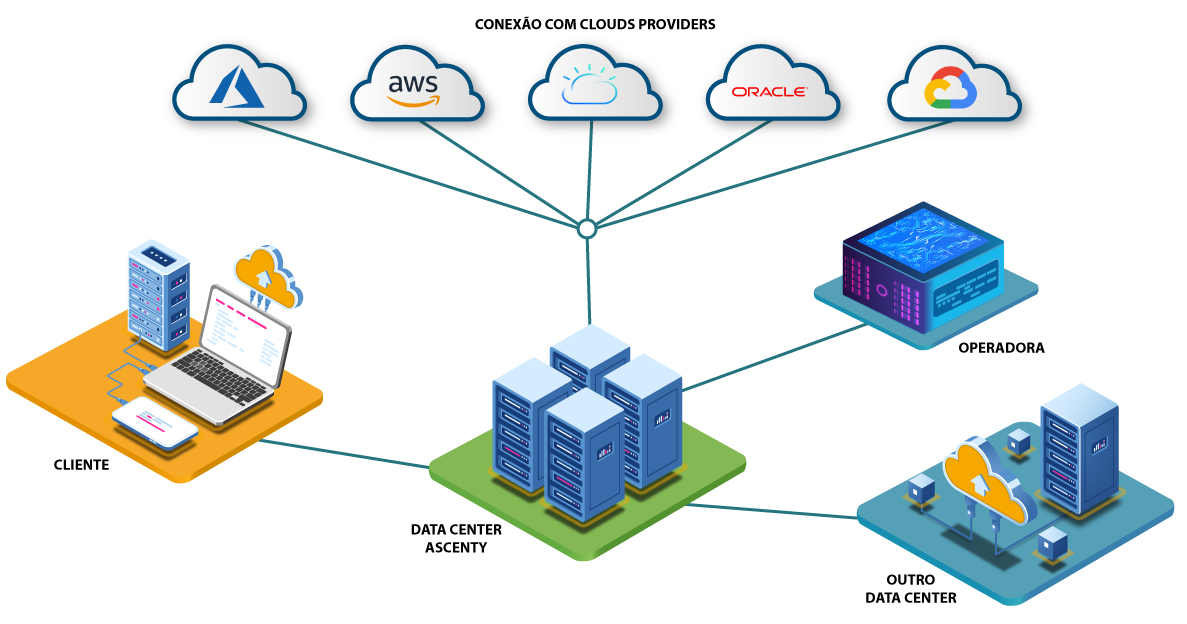What are Cloud Networking and Connectivity Solutions?
Cloud networking and connectivity solutions are a set of technologies and services that enable organizations to create, manage, and optimize their network infrastructure in a cloud-based environment. These solutions provide numerous benefits, such as improved scalability, flexibility, and cost savings compared to traditional on-premises networking. By leveraging cloud networking and connectivity solutions, businesses can efficiently and securely connect their applications, data, and users across various locations and devices.

Key Components of Cloud Networking and Connectivity Solutions
Cloud networking and connectivity solutions consist of various components that work together to provide a robust, secure, and scalable network infrastructure. Three essential components include virtual private clouds (VPCs), software-defined networking (SDN), and network function virtualization (NFV).
Virtual Private Clouds (VPCs)
A virtual private cloud (VPC) is a logically isolated network within a cloud provider’s infrastructure. VPCs enable organizations to create separate network environments for their applications and services, ensuring security and privacy. By configuring subnets, route tables, network gateways, and security groups, businesses can control access, traffic flow, and network policies within their VPCs.
Software-Defined Networking (SDN)
Software-defined networking (SDN) is a network architecture that decouples the control plane from the data plane, allowing for centralized management and programmability of the network. SDN enables organizations to dynamically configure network policies, automate network operations, and optimize network performance. By using open standards and APIs, SDN simplifies network management and reduces the dependency on proprietary hardware.
Network Function Virtualization (NFV)
Network function virtualization (NFV) is a network architecture that virtualizes network functions, such as firewalls, load balancers, and intrusion detection systems, which traditionally run on dedicated hardware. NFV enables organizations to deploy network functions as software applications on standard servers, reducing the need for expensive and proprietary network appliances. By using NFV, businesses can improve network agility, reduce costs, and simplify network operations.
By combining these components, cloud networking and connectivity solutions provide organizations with a flexible, scalable, and secure network infrastructure that can adapt to changing business needs and requirements.

How to Choose the Right Cloud Networking and Connectivity Solution
Selecting the ideal cloud networking and connectivity solution is crucial for businesses seeking to optimize their IT infrastructure and operations. A comprehensive checklist should consider factors such as performance, security, cost, and vendor support. Here are essential elements to consider when choosing a cloud networking and connectivity solution:
Performance
Assess the solution’s ability to deliver high availability, low latency, and sufficient bandwidth for your applications and services. Evaluate the provider’s network infrastructure, data centers, and global presence to ensure optimal performance for your target audience.
Security
Examine the solution’s security features, including encryption, firewalls, access controls, and intrusion detection systems. Ensure the provider complies with relevant industry standards and regulations, such as SOC 2, ISO 27001, and GDPR. Additionally, consider the provider’s incident response capabilities and disaster recovery plans.
Cost
Analyze the pricing structure of the solution, including upfront costs, ongoing fees, and scalability. Determine whether the provider offers flexible pricing models, such as pay-as-you-go or reserved instances, to accommodate your budget and resource requirements.
Vendor Support
Evaluate the provider’s customer support, including technical assistance, documentation, and community resources. Consider the provider’s track record, reputation, and commitment to innovation and continuous improvement.
By carefully considering these factors, businesses can choose a cloud networking and connectivity solution that meets their performance, security, cost, and vendor support requirements. This, in turn, enables organizations to optimize their IT infrastructure, streamline operations, and enhance their competitive advantage.

Top Cloud Networking and Connectivity Solutions in the Market
Cloud networking and connectivity solutions have become essential for modern IT infrastructure, offering scalability, flexibility, and cost savings. Several leading providers offer robust and feature-rich solutions to meet the diverse needs of businesses. Here are the top cloud networking and connectivity solutions in the market:
Amazon Web Services (AWS) Virtual Private Cloud (VPC)
AWS VPC enables businesses to launch AWS resources into a virtual network that they define. This solution offers advanced security features, such as security groups and network access control lists, to help businesses isolate their computing resources and protect their data. Additionally, AWS VPC supports both IPv4 and IPv6 addressing, enabling businesses to build scalable and global applications.
Microsoft Azure Virtual Network
Microsoft Azure Virtual Network enables businesses to create private networks in the cloud, extending their on-premises infrastructure. This solution offers features such as virtual network peering, express route, and VPN gateways, enabling businesses to create hybrid networks, connect to other Azure services, and securely connect to their on-premises infrastructure.
Google Cloud Virtual Private Cloud (VPC)
Google Cloud VPC enables businesses to isolate their resources and control their network traffic. This solution offers features such as custom modes, firewall rules, and VPN connectivity, enabling businesses to build secure and scalable applications. Additionally, Google Cloud VPC supports both IPv4 and IPv6 addressing, enabling businesses to build global applications.
VMware NSX Cloud
VMware NSX Cloud enables businesses to extend their on-premises network infrastructure to the cloud, providing consistent networking and security policies across their hybrid infrastructure. This solution offers features such as microsegmentation, load balancing, and VPN connectivity, enabling businesses to build secure and scalable applications.
Cisco Application Centric Infrastructure (ACI)
Cisco ACI is a software-defined networking (SDN) solution that enables businesses to automate their network infrastructure and provide application-centric network services. This solution offers features such as policy-driven automation, network virtualization, and application performance optimization, enabling businesses to build scalable and agile applications.
By evaluating these top cloud networking and connectivity solutions, businesses can choose a solution that meets their specific needs and requirements. Each solution offers unique features and capabilities, enabling businesses to build secure, scalable, and flexible applications in the cloud.
Real-World Use Cases of Cloud Networking and Connectivity Solutions
Cloud networking and connectivity solutions have become increasingly popular among businesses seeking to improve their IT infrastructure and operations. These solutions offer numerous benefits, including scalability, flexibility, and cost savings. Here are some real-world examples of how businesses have successfully implemented cloud networking and connectivity solutions:
Netflix: Building a Scalable Network Infrastructure
Netflix, a leading streaming service, has built a highly scalable network infrastructure using cloud networking and connectivity solutions. The company uses Amazon Web Services (AWS) Virtual Private Cloud (VPC) to isolate its computing resources and protect its data. By using AWS VPC, Netflix has been able to build a global network infrastructure that can handle millions of simultaneous streams.
Johnson & Johnson: Implementing a Hybrid Cloud Network
Johnson & Johnson, a multinational corporation that develops medical devices, pharmaceuticals, and consumer packaged goods, has implemented a hybrid cloud network using Microsoft Azure Virtual Network. By using Azure Virtual Network, Johnson & Johnson has been able to extend its on-premises infrastructure to the cloud, providing consistent networking and security policies across its hybrid infrastructure.
Spotify: Building a Global Network Infrastructure
Spotify, a music streaming service, has built a highly available and scalable network infrastructure using Google Cloud Virtual Private Cloud (VPC). By using Google Cloud VPC, Spotify has been able to build a global network infrastructure that can handle millions of simultaneous streams. Additionally, Spotify uses Google Cloud VPC to isolate its computing resources and protect its data.
eBay: Implementing a Multi-Cloud Network
eBay, an online marketplace, has implemented a multi-cloud network using VMware NSX Cloud. By using VMware NSX Cloud, eBay has been able to extend its on-premises network infrastructure to the cloud, providing consistent networking and security policies across its multi-cloud infrastructure. Additionally, eBay uses VMware NSX Cloud to automate its network infrastructure and provide application-centric network services.
Cisco Systems: Building a Software-Defined Network
Cisco Systems, a leading networking hardware and telecommunications equipment company, has built a software-defined network using Cisco Application Centric Infrastructure (ACI). By using Cisco ACI, Cisco Systems has been able to automate its network infrastructure and provide application-centric network services. Additionally, Cisco Systems uses Cisco ACI to optimize its application performance and reduce its network complexity.
These real-world use cases demonstrate the potential benefits of cloud networking and connectivity solutions. By implementing these solutions, businesses can improve their IT infrastructure, reduce their costs, and increase their scalability and flexibility. However, it is essential to choose the right cloud networking and connectivity solution and follow best practices for implementation to ensure success.

Best Practices for Implementing Cloud Networking and Connectivity Solutions
Cloud networking and connectivity solutions offer numerous benefits, including scalability, flexibility, and cost savings. However, to fully realize these benefits, it is essential to follow best practices for implementation. Here are some best practices for implementing cloud networking and connectivity solutions:
Design for Scalability
One of the key benefits of cloud networking and connectivity solutions is their ability to scale quickly and easily. When designing your network infrastructure, it is essential to consider your current needs and future growth. By designing for scalability, you can ensure that your network infrastructure can handle increased traffic and new applications as your business grows.
Ensure Security
Security is a critical concern for any network infrastructure. When implementing cloud networking and connectivity solutions, it is essential to ensure that your network is secure. This includes implementing security measures such as firewalls, access controls, and encryption. Additionally, it is essential to regularly monitor your network for security threats and vulnerabilities.
Monitor Performance
Monitoring performance is critical for ensuring that your network infrastructure is running smoothly. When implementing cloud networking and connectivity solutions, it is essential to monitor performance metrics such as latency, packet loss, and throughput. By monitoring performance, you can quickly identify and resolve any issues that may arise.
Automate Network Infrastructure
Automation can help to reduce network complexity and improve efficiency. When implementing cloud networking and connectivity solutions, it is essential to automate your network infrastructure as much as possible. This includes automating tasks such as provisioning, configuration, and monitoring. By automating your network infrastructure, you can reduce the risk of human error and improve your overall network performance.
Choose the Right Vendor
Choosing the right vendor is critical for the success of your cloud networking and connectivity solution. When selecting a vendor, it is essential to consider factors such as performance, security, cost, and vendor support. By choosing a vendor that meets your needs and provides excellent support, you can ensure the success of your cloud networking and connectivity solution.
Implement Network Function Virtualization (NFV)
Network Function Virtualization (NFV) is a technology that allows network functions such as firewalls, load balancers, and intrusion detection systems to be virtualized and run in software. By implementing NFV, you can reduce network complexity, improve agility, and reduce costs. Additionally, NFV allows for the rapid deployment of new network functions and services.
Implement Software-Defined Networking (SDN)
Software-Defined Networking (SDN) is a technology that allows for the centralized control of network infrastructure. By implementing SDN, you can improve network agility, reduce costs, and improve security. Additionally, SDN allows for the rapid deployment of new network services and applications.
By following these best practices, you can ensure the success of your cloud networking and connectivity solution. Additionally, by implementing these best practices, you can improve your IT infrastructure, reduce costs, and increase your scalability and flexibility.
